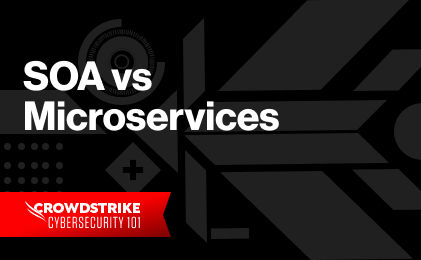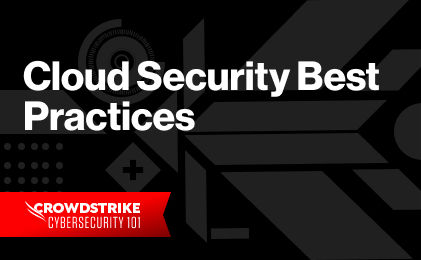Understand CNAPPs with Our Guide
Understand CNAPPs with Our Guide
What is serverless architecture?
Serverless architecture is a software development approach in which developers can run applications without managing the underlying infrastructure. In the serverless computing model, the cloud provider handles all infrastructure setup, maintenance, and scaling. This eliminates the need to install OS and language runtimes, databases, and queuing services, freeing up developer time. Developers thus only write and deploy business logic, enabling them to build high-quality applications faster.
Serverless is event based, which means functions are triggered by events from sources like HTTP requests, database modifications, or file uploads. This approach is ideal for applications that require agility and flexibility because it’s easily extendable. New services that get added to the system can simply listen and respond to the events that are already circulating.
Platforms like AWS Lambda abstract away server management, enabling a pay-per-execution model. Developers are only charged for what they use and not for potentially idle servers. Infrastructure that lays idle doesn’t generate any value and is an overhead for operations, but with serverless, this becomes the responsibility of the cloud provider. With serverless computing, starting and stopping functions takes just a fraction of a second. This enables functions to match unpredictable workloads better than VMs or containers, which can sometimes take minutes for scaling, leaving larger periods overprovisioned or underprovisioned.

The Complete Guide to CNAPPs
Download CrowdStrike's Complete Guide to CNAPPs to understand why Cloud-Native Application Protection Platforms are a critical component of modern cloud security strategies and how to best integrate them to development lifecycles.
Download NowOver the years, cloud architectures have evolved significantly from virtual machines (VMs) to serverless technology. Initially, VMs were the norm because they offered a way to run multiple operating systems (OSs) on a single physical machine. They were the first step in abstracting hardware and one of the main reasons companies started migrating to the cloud.
This approach, however, was not optimal; VMs were still heavyweight. Each VM was required to bring a full software stack with its own OS, libraries, and tools, which slowed down scaling. These shortcomings led to the development of containerization, which enabled developers to run multiple applications on a single OS installation. But even then, it was a labor-intensive process, and application developers were responsible for managing container clusters and their underlying infrastructure.
Serverless technology is the latest solution to the remaining drawbacks of the cloud. Freeing application developers from infrastructure maintenance work lets them focus on building new features. Serverless architecture also works hand in hand with modern microservices architectures and can save businesses money on payroll and infrastructure if used correctly.
Is serverless the same as microservices?
Serverless and microservices are two approaches to cloud computing and software architecture.
The following table provides a quick overview of their differences:
| Serverless | Microservices | |
|---|---|---|
| Goals | Minimizes infrastructure management | Makes large code bases more manageable |
| Compute model | Stateless, ephemeral functions | Self-contained services based on VMs, containers, or functions |
Serverless architecture aims to abstract away server management and scalability. Microservices architecture, on the other hand, focuses on splitting large code bases into smaller, more manageable parts. In serverless, developers write and deploy stateless, ephemeral functions that run in response to events. In contrast, microservices allow the deployment and management of complete self-contained services that manage their own states and storage.
Serverless and microservices each have their own merits and can be used in parallel. For example, when building a system with a microservices architecture, it is generally easier to add serverless services to that architecture later on. Adding them in a monolithic architecture can be more challenging.
Developers can deploy serverless technology to build microservices, and serverless infrastructure providers encourage this practice. Developers can also use it to create software that follows different patterns like monoliths. Likewise, microservices can be built using non-serverless technology, such as containers or VMs. In fact, microservices existed long before the first serverless platforms were released.
Learn More
Read this article to fully understand what a microservices architecture is, what its characteristics are, and what the benefits of adopting it are.
How does FaaS differ from PaaS?
Platform as a service (PaaS) was — and continues to be — a common approach to cloud computing before function as a service (FaaS) was released. PaaS providers gave developers a comprehensive service that allowed them to build, deploy, and manage their applications on VMs or containers while removing much of the work typically involved with these technologies.
So how does FaaS differ from PaaS?
The following table outlines the main differences:
| PaaS | FaaS | |
|---|---|---|
| Goals | Supporting developers in all aspects of application development in the cloud | Streamlining compute infrastructure in the cloud |
| Compute models | VMs, containers, and functions | Stateless, ephemeral functions |
| Abstraction level | High; it is a complete solution | Low; it is a basic building block |
PaaS is a complete application development and management solution that allows developers to manage their deployments from start to finish. It includes features like databases, middleware, and tools to set up and manage cloud-based applications.
FaaS is a compute alternative to VMs and containers. It lets developers focus on writing their business logic as one function while the platform handles the infrastructure. Each function is focused on solving a specific problem and executing for one instance of that problem. In contrast, containers are stateful systems that aren’t started and stopped between tasks. FaaS also removes the maintenance and setup overhead that comes with other approaches, but it can generally be seen as a low-level building block to create cloud-native applications.
FaaS is a subset of PaaS designed to execute functions in a serverless environment. In PaaS — which can use containers, VMs, or functions — developers typically deploy and manage entire applications. In FaaS, developers define functions and specify the events that trigger their execution.
Although FaaS takes on a lower-level approach, it offers developers many benefits, including scalability, resource provisioning, and fault tolerance. Workloads previously considered too small to justify a dedicated server are possible with FaaS.
What are the benefits of serverless?
Application developers can ship solutions faster with less operational burden and considerable cost savings.
Through its many benefits, serverless technology has opened up the cloud space to organizations that might have otherwise lacked the resources to build their own solutions. Some benefits include:
- Streamlined operations
- Automatic scalability
- Cost efficiency
- Fast delivery
- Improved resilience
1. Streamlined operations
Serverless computing streamlines operations by removing the need for server provisioning, configuration, and management. According to salaryexpert.com, an engineer able to manage a Kubernetes-based container cluster costs around $135,000 a year — a high price just to get started with application development in the cloud. Though the costs of running a task on a FaaS platform might have higher per-execution costs, the fact that less personnel is needed can make serverless the better option.
Serverless allows organizations to concentrate on serving their customers instead of wasting precious time on infrastructure-related tasks. Businesses can devote more resources to their core activities and deliver greater value in less time. Streamlined operations also lower the barrier to entry for organizations that haven’t considered building in-house solutions with cloud infrastructure.
2. Automatic scalability
In the past, automatic scaling solutions weren’t always up to the task. The underlying infrastructure was based on VMs or containers. Users report startup times for a VM with a new Red Hat Enterprise Linux 8 installation of around a minute — and that's the baseline without the application software installed.
Moreover, if the scaling service detects an increase in traffic, the instances it starts may not be up and running quickly enough to accommodate this traffic. This has required organizations to put more thought into capacity planning and ways to avoid overprovisioning.
With FaaS, startup times can be under a second, allowing reactive scaling solutions to match incoming traffic much faster and making automated scaling a more viable approach.
3. Cost efficiency
Unlike VMs or container systems, which require businesses to pay for idle server resources, serverless only charges for execution time. If a function isn’t executed, it won’t cost any money. This makes serverless highly cost-effective.
According to one report, companies have significantly lowered their AWS bills through serverless architecture. One organization, for example, went from a monthly charge of $10,000 to just $370 by moving their entire stack to a serverless architecture.
In addition, fast FaaS startup times allow organizations to scale the entire system up to thousands of invocations in a matter of seconds, so companies can save on costs without sacrificing flexibility or performance.
4. Fast delivery
Severless also enables accelerated development and deployment. Businesses can rapidly iterate and deploy new features or updates without worrying about infrastructure provisioning and management. This lets companies react to changing market demands quickly and stay ahead of the competition.
5. Improved resilience
Finally, serverless offers greater resilience than containers, which require the cluster operator to take care of it. This is thanks to its built-in fault tolerance and high availability. Cloud providers handle underlying infrastructure redundancy and automatic scaling, eliminating the need for manual capacity planning. However, cloud providers are not responsible for securing the data and workload. To achieve resilience and secure your applications, consider unified cloud security solutions that deliver security consistency across the entire infrastructure, such as CrowdStrike Falcon® Cloud Security.
Learn More
Read this article to learn the importance of having a cloud security strategy in place, the challenges it comes with, as well as some key elements you want to include in your organization's strategy.
Going beyond VMs and containers with serverless
Serverless technology empowers developers by removing the burden of server management, allowing them to create scalable, reliable, and cost-effective applications that are more valuable to their customers with less effort. With cloud providers managing infrastructure, scaling, and availability, developers can devote more time to high-value tasks like building features, fixing bugs, or research.
Cloud architects will be glad to hear that they don’t have to settle for microservices or monolithic architectures when using serverless. Instead, they can benefit from streamlined operations, cost-effectiveness, and inherent resilience — all without losing flexibility in their architectural design.
Security engineers also have much to gain from serverless technology. The cloud provider is responsible for infrastructure maintenance, including keeping software up-to-date with security fixes. Patching VM images and container orchestrators are two additional tasks security teams no longer have to worry about with serverless.
The cloud has aimed to simplify application development and make it more cost-effective than on-premises solutions by eliminating work not directly related to the value businesses provide to their customers. Serverless helps organizations meet this objective, and by shifting responsibility for many infrastructure tasks and concerns about costs for idle resources to the cloud provider, it goes beyond what VMs do.
CrowdStrike simplifies DevSecOps adoption while reducing the costs of securing containers, workloads, and serverless applications. Learn more about CrowdStrike Falcon® Cloud Security, which delivers comprehensive cloud detection and response while enforcing security posture and golden standard compliance specific to different industries and regulations. Falcon Cloud Security offers a MITRE ATT&CK® detection coverage of 99% for cloud workloads, including containers and serverless environments.
Expert Tip
Join our Falcon Cloud Security hands-on lab to experience how you can secure the entire application life cycle.
Falcon Encounter Hands-On Lab: Securing Cloud-Native Applications





